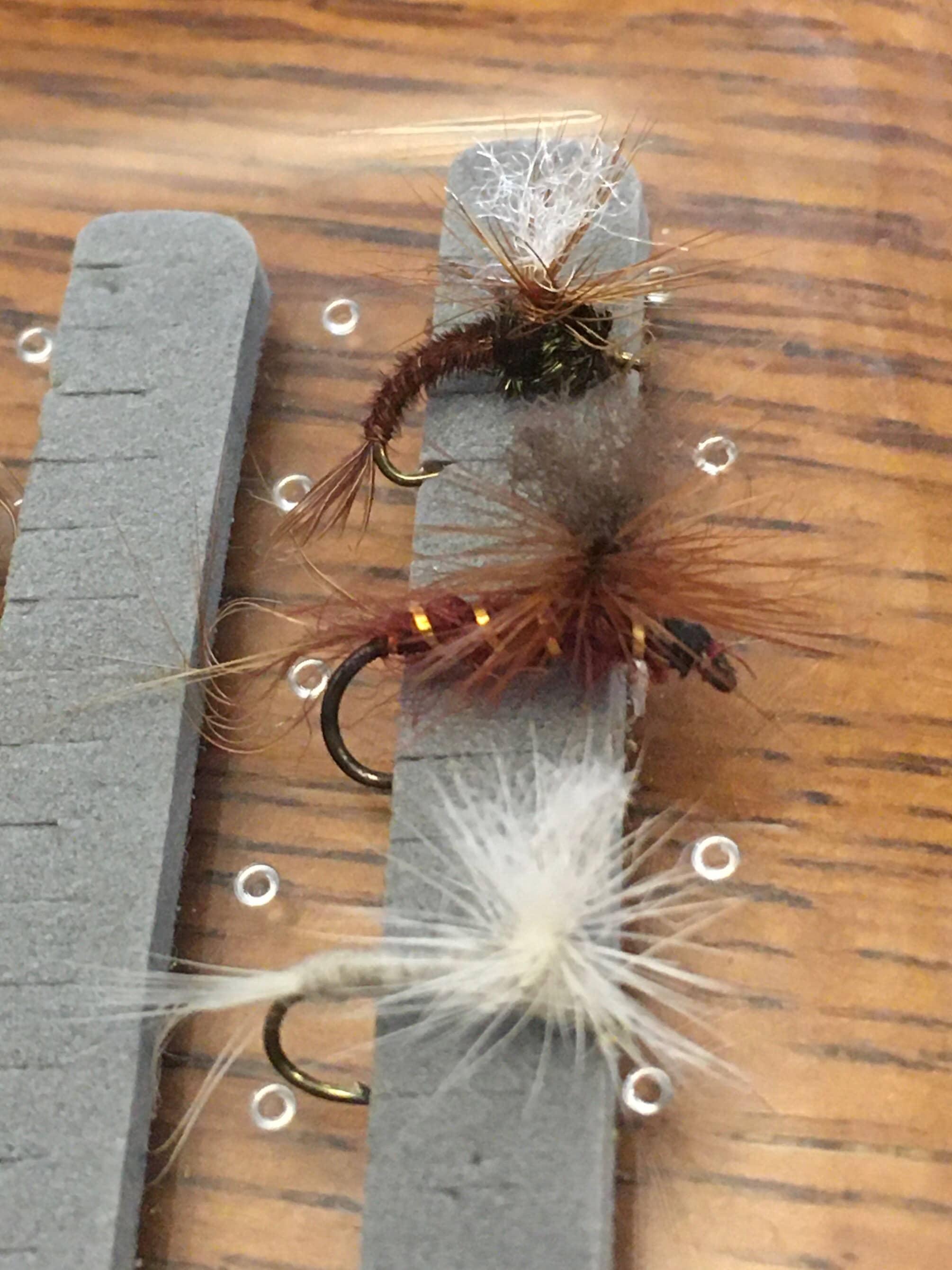
Post ‘Em Out! Adding post wings helps give fish a new look at modified classic patterns and helps anglers see their fly in the drift or amidst dozens of real insects on the water.
By Nick Simonson
Growing up a basketball fan, nothing was more exciting than to watch Shaquille O’Neal stand in the middle of the paint with about four inches on the guy who was guarding him.
His massive hand in the air calling for the feed signaled what was to come next: a quick turn and a posterizing power dunk over the backpedaling defender. Time and again, with hand raised, he’d post up on whatever poor second stringer was in his way and slam it home. It was a hallmark of 1990s basketball and made him my favorite player as I grew up.
In the outdoors as well, a good post player can make all the difference between getting slammed by a rising fish or having the chance at a bite fade away. That’s why the addition of a post – be it a white wing made from Antron or pheasant neck feather, a vertical stretch of hi-viz foam, or a bright pinch of yarn – can not only help convince fish to bite, but also like Shaq’s giant hand in the air, can draw your attention to where the offering is and make you more prepared for what’s to come.
Another Option
Post wings are popular modifications to many mainstream flies. It’s easy to convert any basic hackled dry fly into a post pattern by simply tying in the yarn, foam or other post material and then instead of creating a vertical hackling with a standard wrap forward, wrapping the hackle horizontally to help with floatation. The post better mimics the wings held aloft by many species of mayflies and other insects that rest on the water before their departure and adds a bit of realism and certainly creates a new option to try when fish are finicky. What’s more, with the hackle turned parallel to the water, the fly rests a bit deeper in the surface film, providing more of a body profile to rising fish, suggesting either a bigger bite or an easier one, with the imitation insect struggling to free itself of the water’s surface tension.
Caught Your Attention
The other added benefit, beyond the attention the slight variation may call from fish, is the ease in which a posted fly grabs the eye of an angler. How often does it happen, especially on still waters or on those experiencing a massive hatch, that a fly gets lost during a daydream or in the midst of many real insects piling up on the surface? A fly with a noticeable post of white, yellow, orange or pink stands out without standing out too much and helps draw the attention of an angler trying to monitor drift, or just watching for a subtle slurp of the offering from the surface. Playing with the materials for better buoyancy and adjusting colors for greater visibility all pay off with a better followed fly when it’s out there doing its thing. Knowing where it’s at helps anglers convert and catch fish that might only give a quick take or are rising near the offering and finally inhale it instead of a regular meal.
This tying season take some time to modify favorite dry flies and foam surface bugs like beetles and ants with a post for both something different to try when things get tough, and for a highly-visible option. Consider adding a post wing to some nymphs as well, while it might not be visible under the surface, it gives the impression of an emerging insect on its way up through the column that is just begging to be eaten. Whether it’s expanding tying and pattern creation skills and the addition of vertical wrapping of hackle to one’s repertoire, or tweaking and perfecting some favorite patterns, adding a post to any fly is is a good way to connect the biology of the insect world to some solid slam dunk action on the water.
